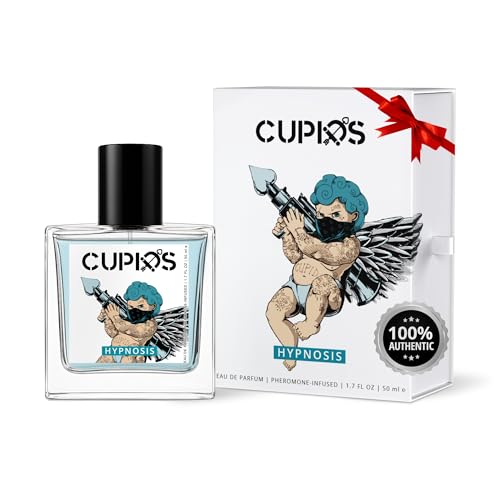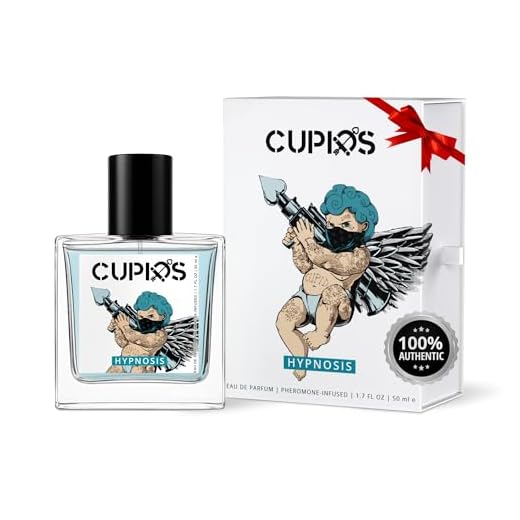




One effective way to enhance your bond with your four-legged companion is to observe how your behaviours and emotions resonate with them. Canines are incredibly perceptive creatures, often picking up on subtle cues that indicate safety, affection, and playfulness. For instance, if you consistently engage in interactive play or provide tasty treats, your furry friend will naturally gravitate towards you over someone who may not offer the same level of engagement.
Personal experiences highlight the importance of positive interactions. My own pet, Bella, tends to favour my partner during quiet evenings on the couch, where calmness reigns. During these moments, she feels secure and cherished. In contrast, during our playful afternoons, she prefers my company, eagerly chasing after toys and basking in the excitement. This illustrates how context shapes preference; different scenarios evoke different attachments.
Creating a consistent routine also plays a significant role in establishing a strong connection. Regular walks, feeding times, and training sessions not only help in building trust but also allow your companion to associate you with reliability and comfort. A dog thrives on predictability, and when you become a source of routine and stability, their affection naturally gravitates towards you.
Furthermore, your emotional state influences your pet’s perception of you. Canines are adept at reading human emotions and often mirror them. If you maintain a positive and relaxed demeanour, your furry friend will likely respond in kind. Conversely, if anxiety or frustration dominates your interactions, it may create a sense of unease, causing your pet to seek solace elsewhere.
Ultimately, the nuances of canine loyalty stem from a blend of interaction, emotional connection, and environmental context. By being mindful of how you engage and the atmosphere you create, you can foster a deeper bond with your beloved companion.
Factors Influencing Canine Affection
To encourage stronger connections, consider these specific traits that may attract a furry companion:
- Energy Level: Match your enthusiasm with theirs. High-energy breeds often thrive with active individuals who engage in play and exercise.
- Body Language: Canines are experts at reading human emotions. Calm and open postures can make a significant difference in their comfort level.
- Consistency: Regular routines and predictable interactions build trust. Dogs appreciate knowing what to expect from their human counterparts.
- Positive Reinforcement: Offering treats or praise during interactions fosters a sense of security and affection. Create memorable moments through shared experiences.
- Time Spent Together: Quality time strengthens bonds. Engaging in activities like training, walks, or simply lounging together can enhance familiarity.
From my own experience, I noticed that my pup gravitated towards friends who exhibited calm demeanours and playful spirits. They seemed to resonate with her energy, leading to delightful moments filled with tail wags and happy barks.
Additionally, observing how different individuals interact with her revealed that those who respected her space and allowed her to approach at her own pace received warmer responses. This understanding of canine comfort zones can significantly impact the relationship formed.
In conclusion, recognising and adapting to the unique preferences of a canine companion can foster deeper connections. By investing time and effort into understanding their needs, anyone can cultivate a rewarding bond.
The Role of Early Socialisation in Canine Preferences
Introduce varied experiences during the first few months of a puppy’s life. This period shapes temperament and future relationships with humans. Engage puppies with different people, environments, and other animals. This exposure helps develop confidence and adaptability, laying the foundation for future interactions.
My own experience with Max, a lively Beagle, highlights this. When he was a puppy, I made a point to invite friends over regularly. Each visitor brought new scents, voices, and behaviours. Max thrived in this environment, learning to approach strangers without fear. His comfort around diverse individuals became evident as he eagerly greeted guests at the door.
Socialisation should include varied experiences beyond just meeting people. Introducing different sounds–like vacuum cleaners or traffic–helps puppies acclimatise to their surroundings. I remember taking Max to a local park, where he encountered everything from children playing to bicycles whizzing by. This exposure not only built his confidence but also taught him to remain calm and composed around unexpected stimuli.
Another factor is the presence of positive reinforcement during social interactions. Associating new experiences with treats or praise encourages a puppy to embrace new situations. I always kept treats handy during playdates with friends’ dogs. Max quickly learned that meeting new canine companions resulted in fun and tasty rewards.
Timing plays a crucial role. Socialising should occur between three and twelve weeks of age. Puppies are more receptive during this phase, forming lasting impressions. Delaying these experiences can lead to anxiety in unfamiliar situations later. Max’s early encounters ensured he grew into a sociable companion, comfortable around various people and pets.
In summary, prioritising early socialisation can significantly influence a canine’s preferences. Create positive, enriching experiences that foster confidence and adaptability. Through hands-on engagement and diverse encounters, your furry friend will develop a well-rounded character, enhancing their interactions with others throughout their life.
Understanding Canine Body Language and Affection
Watch for a wagging tail that signals excitement. The speed and height of the wag can indicate mood; a relaxed wag signifies happiness, while a stiff, fast wag could mean agitation. Pay attention to the position of the tail. A tail held high often suggests confidence, while a low position may indicate submission or fear.
Eye contact plays a significant role in establishing trust. When your furry companion looks at you with soft eyes and relaxed eyebrows, it’s a sign of affection. Conversely, wide-open eyes or direct staring can suggest stress or aggression. Understanding these nuances can enhance your bond.
Facial Expressions and Ears
Observe the ears; they reveal a lot about emotional states. Ears perked up show interest or excitement, while flattened ears indicate submission or fear. A relaxed face, with a slightly open mouth and tongue out, often means comfort and happiness. If you see tight lips or a wrinkled face, it might signal discomfort or distress.
Interpreting canine body language means noticing the entire posture. A relaxed stance with a loose body indicates comfort, while a tense body could mean anxiety. A playful bow, where the front legs are stretched forward and the rear is raised, is an invitation to play and shows eagerness.
The Importance of Interaction
Engage in positive interactions through play and training. Active participation fosters trust and attachment. Use treats or toys during training sessions to create positive associations. Regular interaction not only strengthens your relationship but also enhances emotional security.
Understanding these signals can transform your interactions and deepen your relationship. The more you connect and respond to these cues, the stronger the bond becomes, leading to a fulfilling companionship filled with love and affection.
How Consistency in Routine Influences Canine Bonds
Establishing a consistent daily routine significantly strengthens the connection between a pet and its owner. Predictable patterns create a sense of security, allowing furry companions to feel safe and cherished. For instance, feeding at the same time each day fosters anticipation and trust. I noticed my pup, Max, became noticeably calmer and more affectionate when I adhered to a regular schedule for meals and walks.
The Impact of Regular Interaction
Frequent engagement during routine activities enhances emotional ties. Simple actions like playing fetch at the same time daily or setting aside moments for training sessions contribute to a deeper relationship. I recall how Max eagerly awaited our evening playtime, his excitement growing as the clock approached the hour. This anticipation not only reinforced his attachment to me but also improved his mood and behaviour.
Reassurance Through Predictability
Maintaining a steady environment helps alleviate anxiety and builds confidence. Changes in daily activities can lead to stress, causing a shift in behaviour. For example, when I had to alter Max’s walk schedule due to my work commitments, he exhibited signs of unease. Returning to our established routine quickly restored his calmness and trust. Keeping a predictable environment allows pets to thrive, resulting in a stronger bond.
Overall, consistency in daily routines is a powerful tool for cultivating a loving relationship with a canine companion. By prioritising regular interactions and predictable schedules, owners can nurture a deep connection that fosters loyalty and companionship.
The Impact of Scent and Familiarity on Canine Choices
To enhance connections, focus on scents that resonate with your furry companion. Dogs possess an extraordinary sense of smell, which significantly influences their preferences. Engaging with familiar scents–like those of a beloved person–can create strong emotional ties. For instance, wearing an item of clothing for a while before interacting with your pet can transfer your scent, making you more appealing in their eyes.
Another aspect is the familiarity of environments. Animals often feel more secure in spaces they associate with positive experiences. Regularly spending time in specific locations, such as parks or homes, where joyful interactions occurred can establish a sense of belonging. This familiarity can lead to stronger attachments.
| Factors Impacting Scent Recognition | Examples |
|---|---|
| Personal Scents | Clothing, personal items |
| Environmental Scents | Familiar locations, nature |
| Food Scents | Treats, specific dog foods |
Incorporating engaging scents, like treats or toys, can create positive associations. For example, using high-quality food, such as who sells acana dog food in edmonton, can enhance the bond through shared meals and enjoyable experiences.
In summary, focusing on scent and familiar environments fosters deeper emotional connections, making interactions with pets more rewarding and enriching for both sides.
Training Techniques That Foster a Stronger Connection
Implement positive reinforcement consistently. Reward behaviours you wish to encourage with treats, praise, or playtime. This creates a strong association between desired actions and positive outcomes, building trust.
Engagement Through Play
Incorporate interactive play sessions. Use fetch, tug-of-war, or puzzle toys to stimulate mental and physical activity. These activities not only strengthen bonds but also enhance communication. Here’s how to do it:
- Choose toys that match your companion’s interest.
- Spend at least 15 minutes daily engaging in play.
- Rotate toys to maintain excitement.
Obedience Training
Establish a routine for basic commands. Teaching sit, stay, or come solidifies communication. Follow these steps to maximise effectiveness:
- Start with short, focused sessions of 5-10 minutes.
- Use clear, consistent commands.
- End each session on a positive note with a reward.
Consider incorporating clicker training. This method effectively marks the desired behaviour and reinforces learning through a distinct sound, making it easier to understand when they’ve performed correctly.
Attend group classes. Socialising with peers and their companions can boost confidence and improve interaction skills, strengthening the bond further.
Be patient and observant. Each interaction contributes to the relationship. Take time to understand preferences and adapt training styles accordingly. This tailored approach fosters deeper connections over time.









